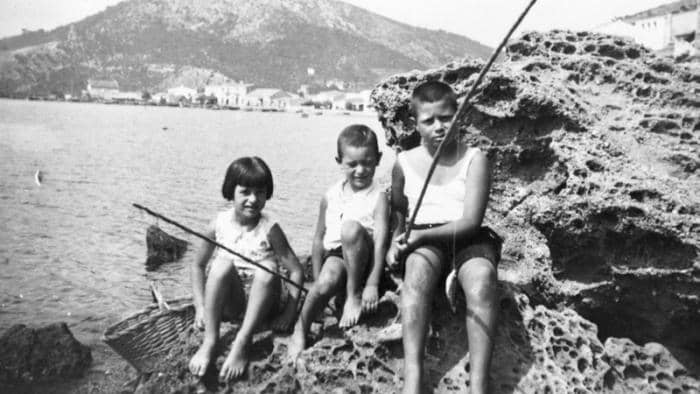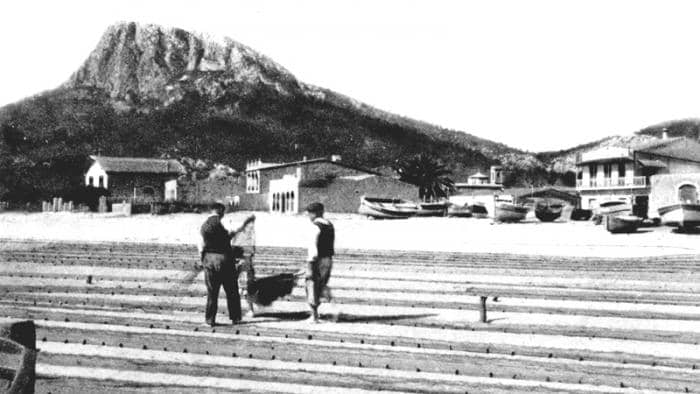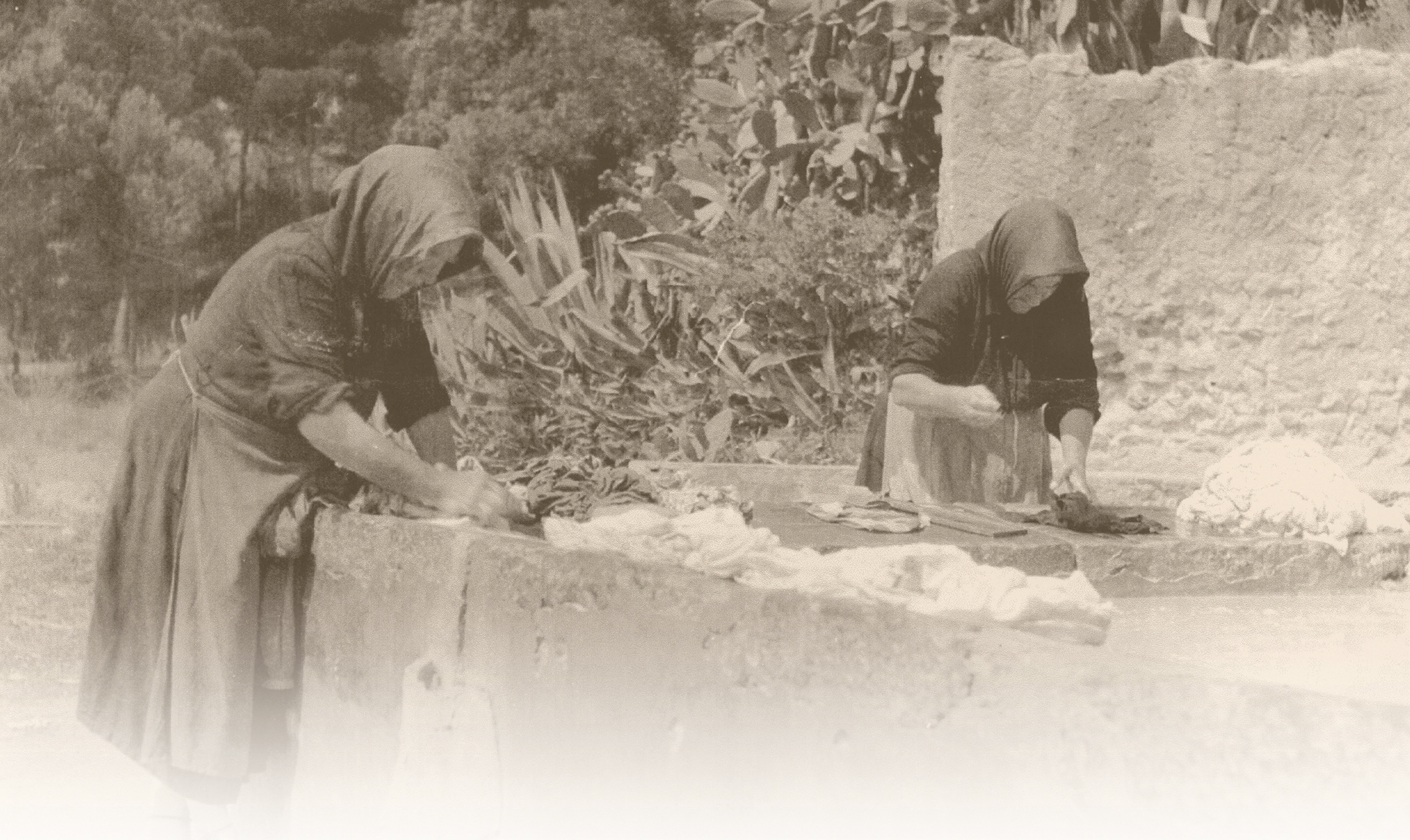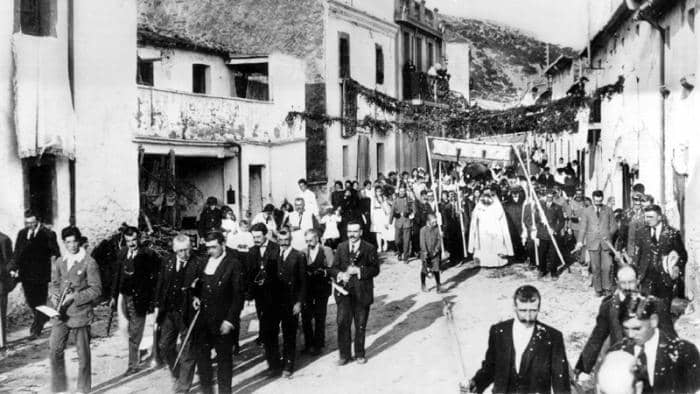4. Visspullen

The boats were grounded on the beaches and the nets were spread out on the sand to dry and mend.
The fishermen themselves performed the task of repairing the holes in the nets. When the weather turned bad it was a regularly performed task, since the nets were often damaged. There was a group of women who, seated on the sand, mended the nets with their agile fingers far more skilfully than the men.
The so-called “art de platja” was fishing method used in l’Estartit up to the early 20th century. This method consisted of spreading out the net in the water with the aid of a boat, and from land, men and women dragged the implement back and forth.
The solta is another fishing method used in l’Estartit. Vertical mesh nets were used and, like the name indicates (solta means “loose”), the nets were placed in such a way that they were not stretched tight, thus easily capturing fish in the meshwork.
In addition to the solta there were other methods involving smaller gear, including the jonquet, the volantí and the rall. The jonquet is a short reed with a weightless thread tied to one end along with a baited hook; several were placed at a time through rock crevasses to bait unsuspecting fish. The volantí is a wooden rod to which the fishing line is tied; several separate hooks are tied to the end of the line which also has a weight. The rall is a small, cone-shaped ballasted net that is thrown open into the water and closes when dragged, trapping fish inside.














